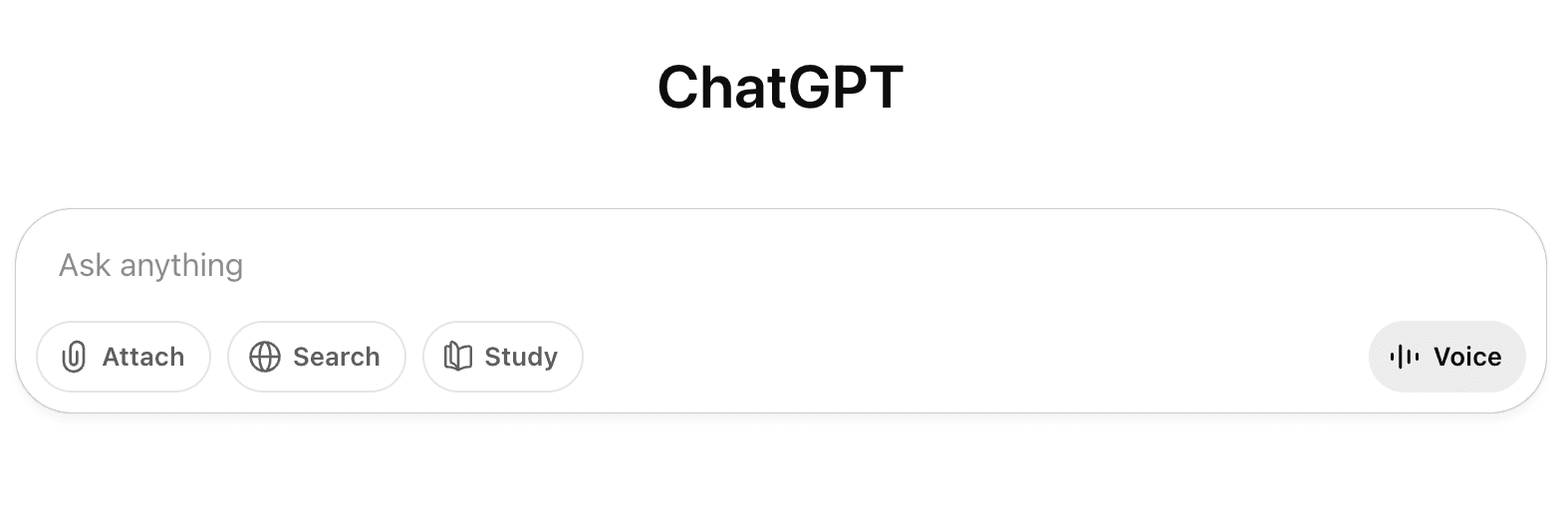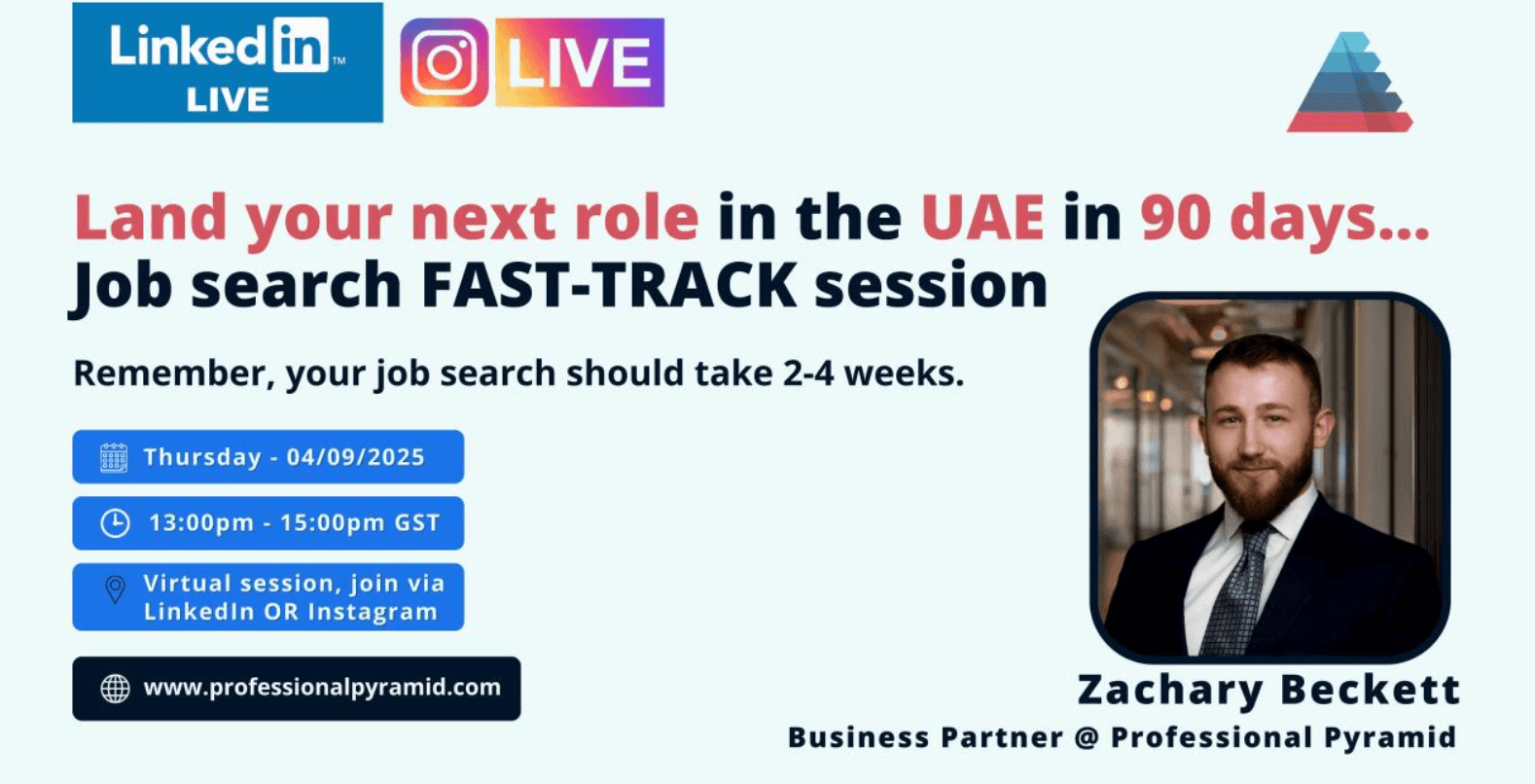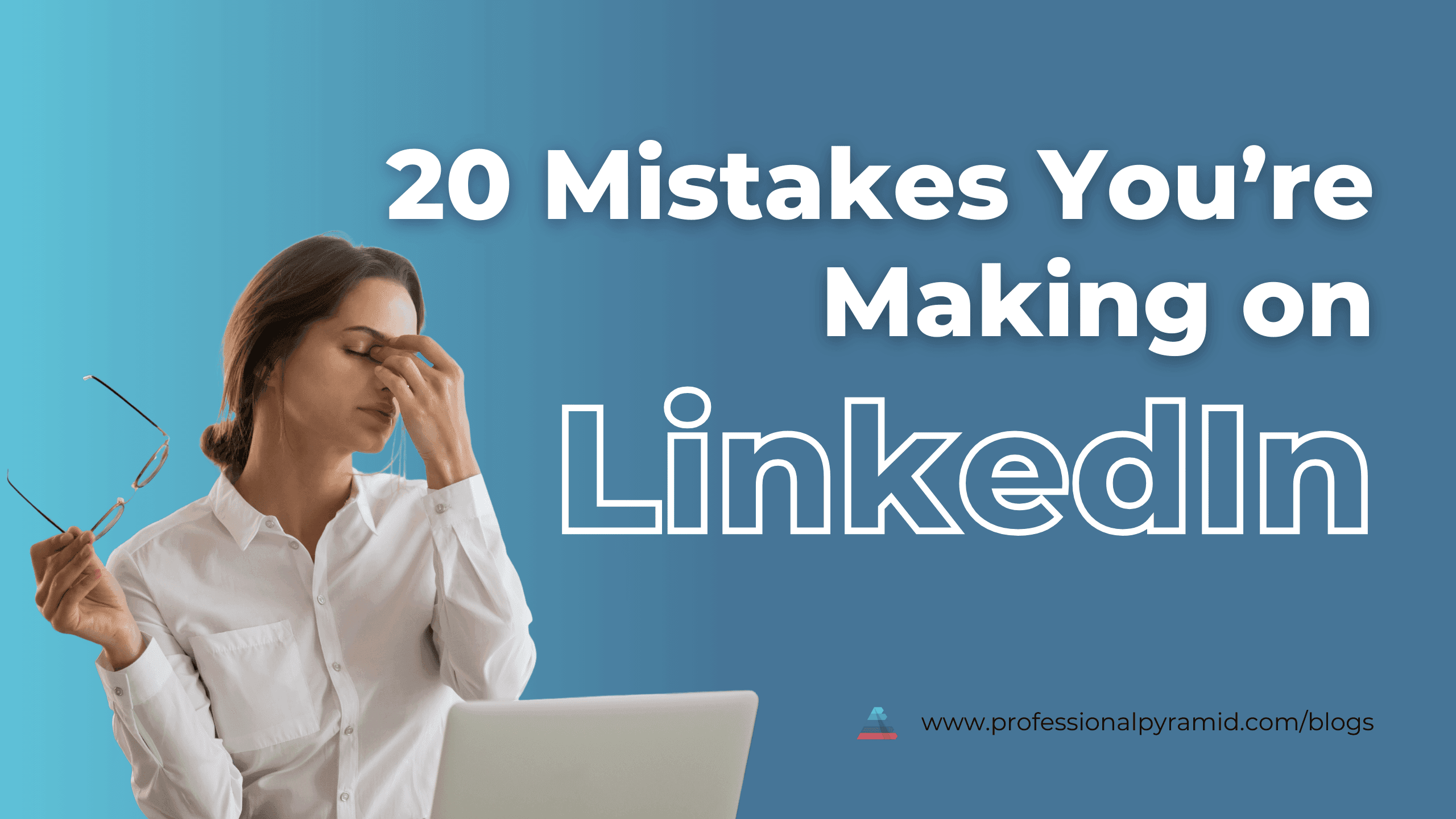20 mistakes you're making on LinkedIn that are making you invisible to hiring managers
20 mistakes you’re making on LinkedIn that are making you invisible to hiring managers
1. Clear profile photo
If your profile picture is the first thing someone sees, and your photo is unclear or unprofessional, this’ll lead to your profile immediately being skipped over. First impressions are everything - it might not be nice, but you WILL be judged.
2. Certifications in your name
If you're listing your certifications with your name, ie, Paul Simpson MBA PMP, it will be difficult for recruiters to find you as the name function isn’t being used as intended - this can and will directly interfere with how the search function works.
3. No LinkedIn banner
Having no banner can not only make your profile look unfinished, but it can also cause a direct dip in visibility due to your profile being incomplete.

4. Low quality or inappropriate LinkedIn banner
Make sure your LinkedIn banner is relevant to your work. For example, a quick fix could be using a city skyline or something to this tune - easy, fast, and fit for purpose. Having a low quality banner can in some ways be worse than not having one at all.
5. Not engaging or being an active user
An inactive profile with no posts, likes, or comments makes you invisible. Engaging in others' posts will increase your visibility, and increase your chances of getting headhunted - this is direct, algorithmic boosting.
6. Not customising your LinkedIn URL
The URL LinkedIn gives you with random characters looks messy. A custom URL with your name at the end will look infinitely more professional, and sometimes, the smaller details can really help increase your chances of landing interviews - take every inch you can find.

7. Lack of keywords in the skills section
Recruiters search with keywords. Not listing your skills, simply put, means you will NOT show up in searches that are being run by talent acquisition teams when looking for profiles like yours, use broad terms, such as Project Management, Operations Management, or Finance, & also include more niche terms such as PMP, CFA, Audit, Agile Methodologies, etc.
8. Including irrelevant jobs
Listing every job can clutter your profile. Include relevant experience only. Recruiters will literally spend a few seconds looking at your profile, and if it isn’t clear to them that you're a fit, they will move on to someone else straight away.
9. No recommendations
Having at least one or two recommendations can increase trust and credibility for recruiters or hiring managers. Not having any recommendations will put you at a disadvantage to those you are in competition with.
(LinkedIn recommendations can often take place of references, they aren't to be neglected).
10. About section is blank
Leaving your About section empty means you’re missing a chance to tell recruiters or hiring managers clearly who you are and what you do. An unfinished profile means less visibility, and you will be missing from essential searches as LinkedIn recruiter finds key words from your about section to recommend your profile to recruitment teams.
11. Listing job titles with no details
A role with no context makes it hard for recruiters to understand what you actually did in your past roles. Having just your job title is not good enough, and if you don't give more details, recruiters won’t know if you are a good fit for the job, and they will quickly move on to find someone who is.
12. Not using examples
It’s great to highlight what you’re good at, but recruiters like to see proof. Include success metrics and stats to back yourself. Including these will increase your chances of wowing recruiters and getting them to put your profile forward to hiring managers & decision makers for an interview.
13. Leaving profile sections empty
If you have certifications, projects, or languages that you could include, make sure you list them, as these can not only set you apart from others in your industry, but also make you appear in more advanced + niche searches,
(and this runs true especially if you speak Arabic, or have something to share that'd be particularly useful in the GCC).
14. Using AI to write your profile
It is clear to recruiters (and to the LinkedIn algorithm) when AI has written your profile. They do not want to see copy and paste. People hire people, and if it is evident that chat GPT has written your profile, recruiters will skip it entirely.

15. Engaging, but engaging incorrectly
For example, getting AI to reach out or comment for you, engaging with negative or charged content, or commenting on controversial/non-professional posts. What you engage in is public - be sure it’s appropriate. If you do engage the wrong way, this could have a negative impact on your future opportunities.
(believe it or not, we’ve actually seen offers rescinded because of this exact reason).
16. Not connecting with people
Having lots of connections is great, but it is even more important that they are the right connections and not just any random people. Connecting with people who are both regionally and professionally relevant will lead to you having a hyper-targeted network, and give the algorithm exactly what it needs to guarantee you’re showing up in the right recruiter searches and getting headhunted frequently.

17. Not prioritising quality over quantity
When setting up/filling out your profile, don’t focus on simply maxing out every allowed character. Just because LinkedIn may allow a lot of text, it doesn’t mean you need to use it all. Include what is relevant and important, this should be high impact, concise, and algorithmically targeted. Recruiters have limited time and will be more attracted to profiles that they can absorb quickly.
18. Looking over the little things
There simply can not be any mistakes in your profile, whether it’s a space used incorrectly, a word spelt wrong, or a grammatical issue, there is definitively no place for it. Mistakes will force recruiters to question your ability, your competency, and your commitment to landing a role. Adding to that, they run the risk of it making them look bad for not doing their due diligence on who they’re presenting to hiring managers.
19. Not showing career progression
Show clear development and progression in your experience. If your most recent experience isn’t in line with the roles you are applying for, you’re going to make landing interviews 10x harder. A tip to really manipulate this is to somewhat align your previous career history with the standardized progression/hierarchy of the organisations you’re applying to.
20. Not signing up for free events
Register for free events in the GCC so LinkedIn’s algorithm knows exactly what you’re looking for, it will use this data to give you exactly what you want (which is your profile showing up in relevant searches for recruiters and hiring teams, and ultimately, landing your next job). If you miss out on free events, you could also be missing out critical information that could lead to you landing your next role.

Click here to go to our events page, this is where you can register to attend all of our upcoming events to help you secure your next role in the GCC.
Ps. The best part is, it’s completely FREE.
Want to apply for verified jobs in the UAE, KSA, or wider GCC? Click here
Return to blog page
